Now that we’ve toured the webby world of Uzbek texiles, it’s time to start a new thread (as it were), and take a peek into the world of Madrasas, centers of Muslim education and religion. They are very common in the Islamic world, and today we’ll have a look the ones in In Bukhara ahead of your 5th day on your Central Asia Rally.
Photo by OpenStreetMap
How did they come about?
Madrasas are to Bukhara as university colleges are to Oxford or Cambridge. Just like the colleges, they started out as institutions of higher education supported by wealthy benefactors, where teachers and students lived and worked together.Endowing a madrassa was did not come cheap. As well as the construction costs for the buildings, benefactors were expected to provide enough property or land to pay for the building’s upkeep and support the students and teachers.
Apart from a sense of satisfaction, what did the donors get out of all this?
Because the madrasa bore his name, the benefactor would have a lasting legacy in the eyes of Bukhara’s population and, hopefully, be looked upon favorably when he finally had to account for his good deeds before God.
What was taught in madrasas in their early years?
The curriculum in these institutions included both religious and secular subjects. Arabic and Persian literature, Arabic grammar, and sharia were taught to the youngest students, who could enter here at the age of 15; older students also studied law and logic. Classes were taught four days a week all year round, and students were expected to pass a final exam before they took their degree. Only then were they given an appropriate job by the khan.
What did madrasas look like from the inside and who all lived there?
The buildings were divided into private and public areas. Public rooms included an audience hall, the mosque, and teaching rooms, and at the back of the madrassa were ordinarily the students’ hujras, or rooms, where they slept. As well as the teachers and their students, the madrassa’s community also included, a muezzin to call the residents to prayer, an imam , a mutavalli (similar to a bursar), and regular staff like barbers, cleaners, and water carriers. Okay, let’s go see them!
Chor-Minor Madrasa
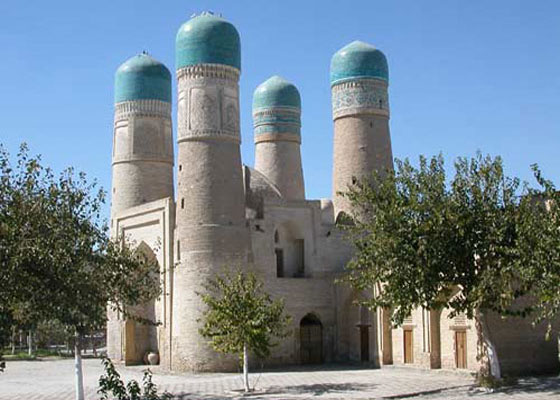
The Chor-Minor (which stands for “four minarets”) is one of the architectural wonders of the city. Built in the early 1800s, it boasts four minarets that represent the four sides of the world. Each one of these has its own unique distinguishing ornament. The Chor-Minor also has a pond, a courtyard, and a summer mosque. Inside you can see religious inscriptions in Arabic on the walls.
Nadir Divan-Beghi Madrasa
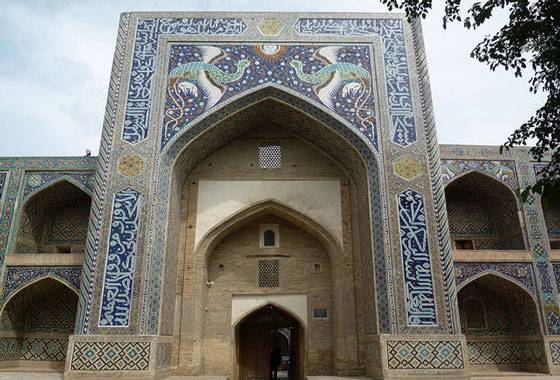
The Nadir Divan-Beghi Madrasah was built in the 1600s, and was originally meant to be a caravan stop. However, at its opening ceremony, the Imam declared it a madrasa, which precipitated the addition of a portal and towers. The building is well-known for its beauty, especially for the magnificent images of birds and animals on its portal.
Ulugbek’s Madrasa
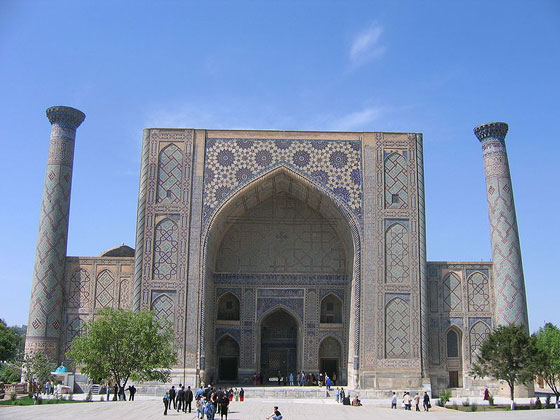
The Ulugbek Madrasa dates back to 1417. It was built as a tribute to Ulugbek, a great mathematician and astronomer. This well-proportioned, distinctive monument was designed by architect Ismail Isfagani. the façade is richly ornamented, and there are two elegant arches linked to the portal.
Mir-i Arab Madrasa
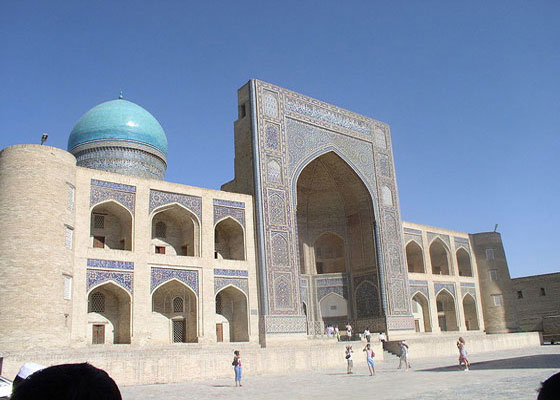
The Mir-i Arab Madrasa is believed to have been built in the 1500s. It is part of the massive Kalyan Complex, and is widely held to be one of the most beautiful places in Bukhara. Still functioning as a madrasa today. It has over 100 places for students.
Mullo Tursunjon Madrasa
The centrally-located Mullo Tursunjon was created in the 1500s. Though it is no longer a working madrasa, it nevertheless remains an important architectural monument. This two-storey symmetrical edifice features an ornamented arch at its center. In the 18th Century, this madrasa used to be numbered among the finest in the city.
Modari-Khan Madrasa
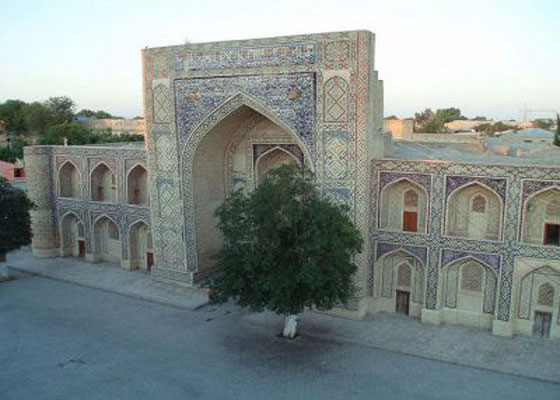
The Modari-Khan and Abdullakhan are two parts of the Kosh-Madrasa complex. Kosh means “double. The two buildings here are facing each other across a street. Modari-Khan was built by Abdullakhan II in the mid1500s. It still contains a hostel for teachers and students, a mosque, and a courtyard. Worth spending a few minutes admiring the colorful mosaics on the building’s façade.
Abdullakhan Madrasa
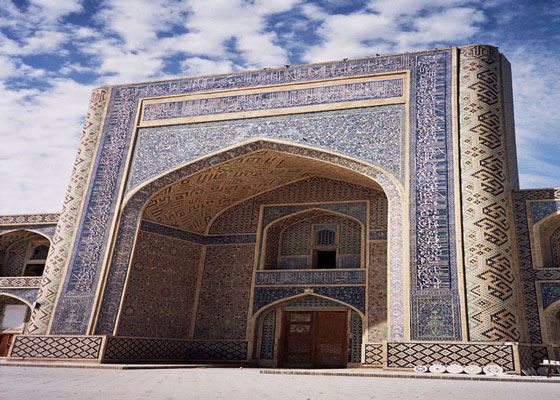
The Abdullakhan Madrasa is the second building of the Kosh-Madrasah complex, and is a work of art, with its medieval architecture and exquisitely decorated façade shining under the sun’s rays.
Djuiboriy Kalon Madrasa

The Djiuboriy Kalon Madrasa was erected in the 15th-17th centuries, and was a fully funtioning school up til the 19th Century. This building is now an architectural monument that is a part of the UNESCO World Heritage Site of Bukhara.
Abdullaziz khan Madrasa
The Voliday Abdullazizkhan Madrasa was also built in the 15th – 17th centuries, and is no longer a functioning school either; however, it is an architectural monument recognized by UNESCO.
This brings us to the end of this two-hour, 4.2 kilometre walking tour in Bukhara. If you’re minded to apply a bit of tech while you’re there, this tour is included in both the iOS app Travel Articles, City Maps and Walking Tours in the iTunes app store and the Android app “Bukhara Map and Walks” on Google Play.
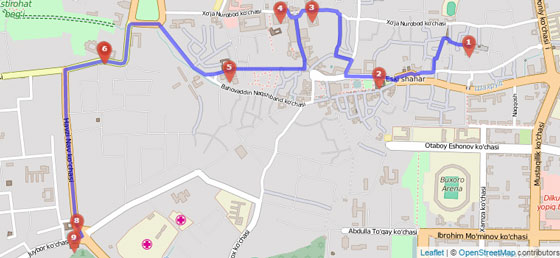

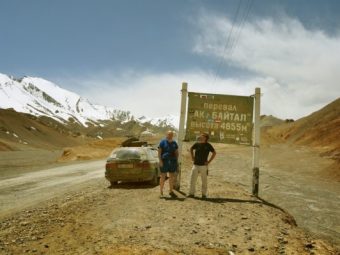
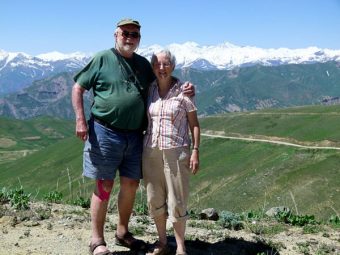


Leave a Reply